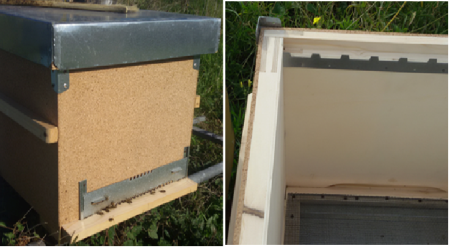
Objective:
The aim of this trial was to : a) increase thermoregulation efficiency of beehives by using cork in the construction of hive walls, thus improving bee health and hive productivity; b) contribute to the maintenance of traditional apiculture practices of Mediterranean agro-silvo pastoral systems, as historical findings indicate a widespread use of cork for the construction of rustic hives; c) favour a better use of a secondary product of the cork processing industry (granulated cork); d) produce lighter and more resistant hives, compared to wooden hives; e) promote the use of cork as a fundamental product and economic source of revenue of traditional agro-forestry systems.
Context:
The insulating properties of cork as construction material of modern hives and its impact on thermoregulation of Italian bee (Apis mellifera ligustica) colonies, in comparison to traditional beehives made of fir wood was tested. The study was performed at the University of Sassari (NW Sardinia, Italy). Experimental Dadant-Blatt cork-wooden hives with 3 cm-thick walls made mostly of cork (83%) and only a thin inner layer of wood (0.5 cm) were compared with standard Dadant-Blatt fir wood hives, used as control. The experimental beehives were handcrafted in the woodworking facilities of Montarbu and Pixinamanna, managed by the Regional Forest Agency (FoReSTAS - Sardinia).
Contacts:
Ignazio Floris, ifloris@uniss.it , https://agrariaweb.uniss.it/it
Michelina Pusceddu, mpusceddu@uniss.it , https://agrariaweb.uniss.it/it
Alberto Satta, albsatta@uniss.it , https://agrariaweb.uniss.it/it
Further information:
Satta A., Floris I. 2004. Effects of the cork on the thermal insulation and the thermoregulation of beehive [Sardinia]. APOidea 1: 80-87.